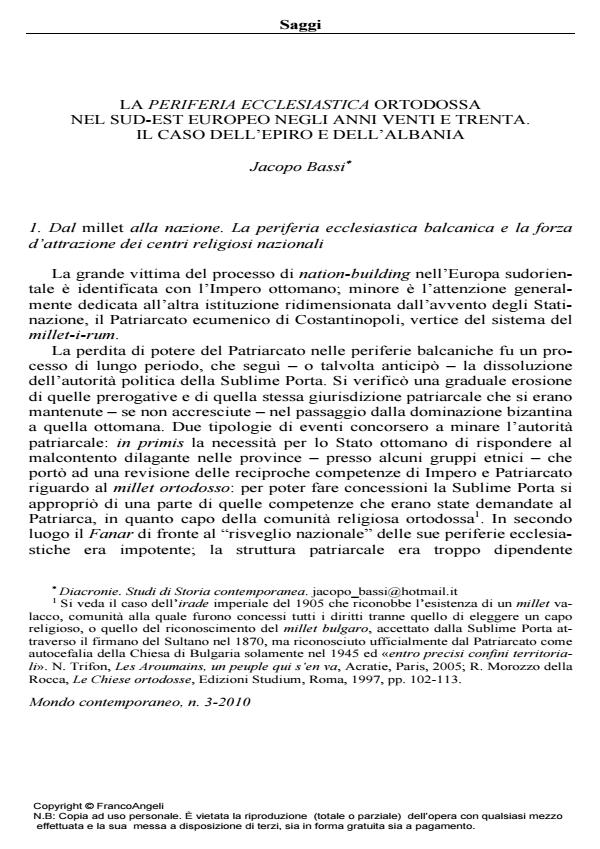The Orthodox Church Periphery in South-Eastern Europe in the 1920s and 1930s. The Case of Epirus and Albania
Journal title MONDO CONTEMPORANEO
Author/s Jacopo Bassi
Publishing Year 2011 Issue 2010/3 Language Italian
Pages 20 P. 5-24 File size 535 KB
DOI 10.3280/MON2010-003001
DOI is like a bar code for intellectual property: to have more infomation
click here
Below, you can see the article first page
If you want to buy this article in PDF format, you can do it, following the instructions to buy download credits

FrancoAngeli is member of Publishers International Linking Association, Inc (PILA), a not-for-profit association which run the CrossRef service enabling links to and from online scholarly content.
The Ottoman Empire entailed a change inside the Christian-Orthodox world as well. The creation and consolidation of the Balcan national states and the autocephalic orthodox Church were the foundations of the new definition of national Churches jurisdictional borders. In the Twenties’ and Thirties’, Albania and Greece tried to control Orthodox religious institutions to pressure the Ecumenical Patriarchate: the aim of Greek and Albanian diplomats was moving cultural influence, exerted by religious institutions over populations living in south Albania, inhabited, prevalently, by orthodox believers. The Greek State wished to claim these countries: defending orthodox population was a perfect excuse. The debated zone became a "blind spot" among the traditional patriarchal jurisdiction, the rising Albanian Orthodox Church and Greek Church that wanted to inherit, by Costantinople, prestige and historical heritage of Eastern Christianity.
Keywords: Albanian autocephalous orthodox Church, Greek autocephalous orthodox Church, Albania, Greece, Ecumenical Patriarchate, helladism
Jacopo Bassi, La <i>periferia ecclesiastica</i> ortodossa nel Sud-Est europeo negli anni Venti e Trenta. Il caso dell’Epiro e dell’Albania in "MONDO CONTEMPORANEO" 3/2010, pp 5-24, DOI: 10.3280/MON2010-003001